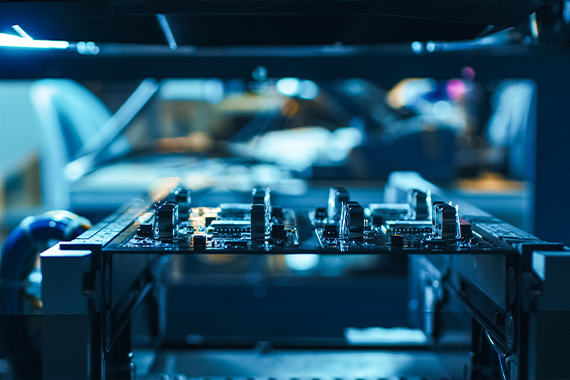Sensing
Utilizing KEMET expertise with the materials used in our capacitors, inductors, and magnetics, the KEMET sensor portfolio focuses on high sensitivity temperature, current, and proximity sensing.
Overview
The KEMET portfolio of sensors relays reliable information on ambient temperature, device current, physical proximity, vibration readings, and other environmental data in a wide range of industries and applications. They can be easily interfaced and are highly reliable with minimal failure points due to their simple design and construction.
Temperature Sensors
KEMET thermal sensors utilize Thermorite®, a temperature-sensing magnetic material with a precisely adjustable switch point (or Curie point). Once the Thermorite® reaches its designated temperature, a switch is triggered that either closes or opens the circuit. These features enable our temperature sensors to be easy to design in and they can be used independently from a microcontroller or processor for a variety of applications.
- Offered in a variety of form factors, voltage ratings, and temperature trip points
- Available with either Normally Open (NO) or Normally Closed (NC) contacts
- KEMET Thermal Guard Series (OHD) is designed to detect overheating conditions and quickly respond. They can switch low power signals (0.1 W) up to higher powered circuits (6 W), and are dust, corrosion, and explosion proof
- KEMET Thermal Reed Series (TRS) is designed to be highly reliable for a long lifetime. They have a wide temperature trip point range (-10°C to 130°C) and a precise trip point setting (±2.5°C)

Current Sensors

Current sensors provide critical information for many different applications. They can enable essential energy savings or provide basic information needed for safe operation in any number of products. Like many KEMET sensors, they are very simple to interface, requiring only one resistor to monitor the proportional measured current coming out of the current transformer. Current sensors can be used to monitor motor drive lines, smart meters, and uninterruptible power supplies.
- For low alternating current applications, the CT Series is recommended
- For higher alternating current applications, the C/CT Series is recommended
- For direct current and pulse current monitoring, the LA12 sensor is recommended
- For residual current sensing for In-Cable Control and Protection Devices (IC-CPD) or Wallbox, the FG Series is recommended
Proximity Sensors
Proximity sensors are tuned to detect infrared changes in the environment typically caused by the human body. They can be used through certain materials without having the sensor exposed to the outside world. Typical applications include contactless switching or fast detection of humans in the vicinity.
- Plug and play module or standalone part available for purchase
- Plug and play module outputs a 3.0 V digital detection signal and is easy to implement in many designs
- Stand-alone part requires extra filtering and signal amplification
- Compatible to work through a wide variety of material types and thicknesses
- Low 800 μA consumption current makes it very suitable for battery operated devices

Vibration Sensors

Based on the piezoelectric effect, KEMET vibration sensors can detect a wide range and magnitude of vibrations in a single solution. These sensors are capable of detecting from tens of Hz to tens of kHz and vibration intensity from sub-1 g to tens of g’s. Their MEM-based counterparts have a narrower range of operation and, being an active element, consume more power during operation and in a quiescent state. Sensors such as these are used in industrial applications where continuous monitoring of systems is needed to assess their health. Elevated vibration levels, gone unchecked, can result in unexpected breakdown of systems and cause costly downtimes. Other common applications include:
- Machine tools
- Production equipment
- Infrastructure
- Robotics
- Wind power turbines
- Motors
- Gears and bearings
- Test and instrumentation
